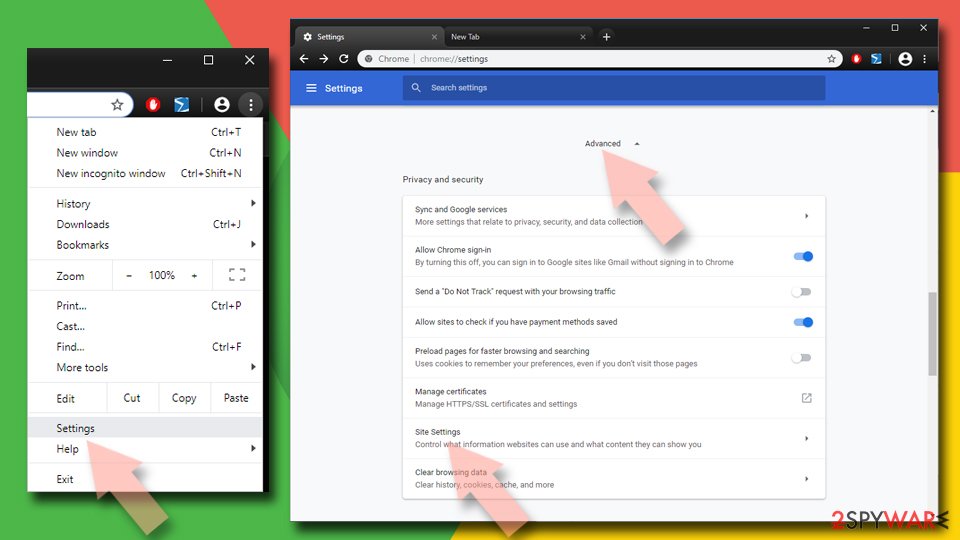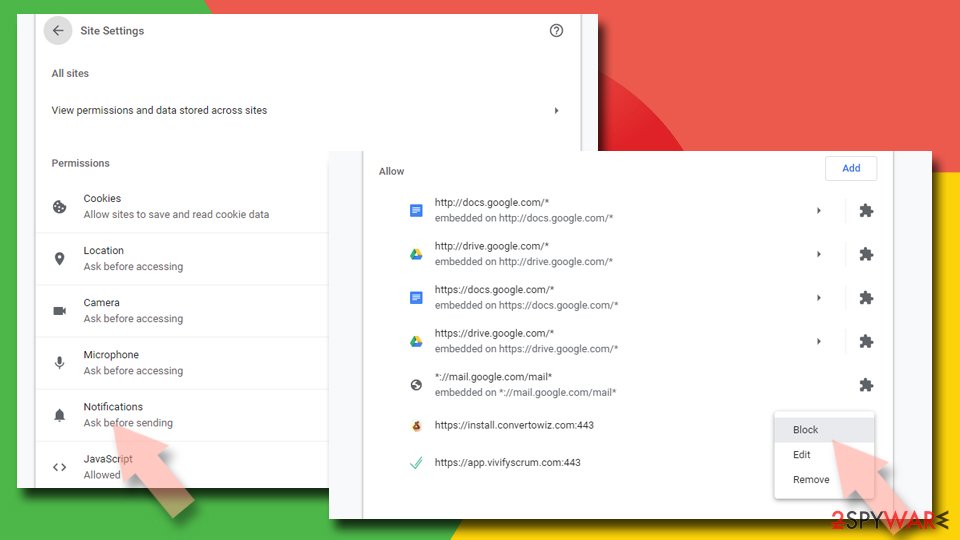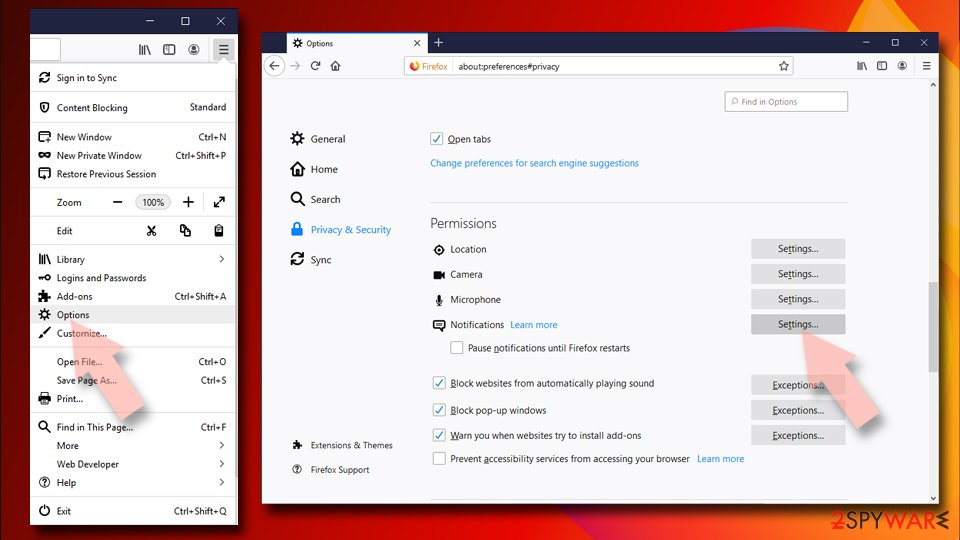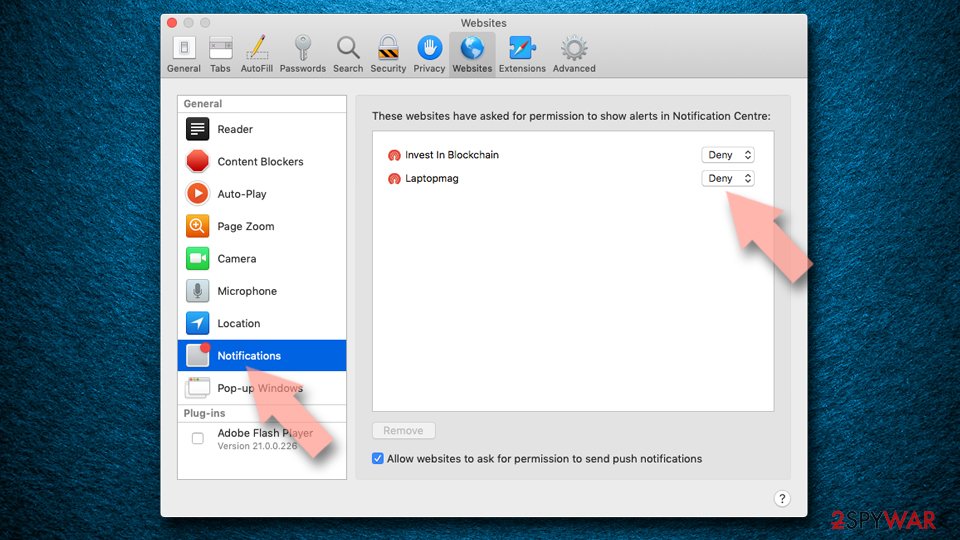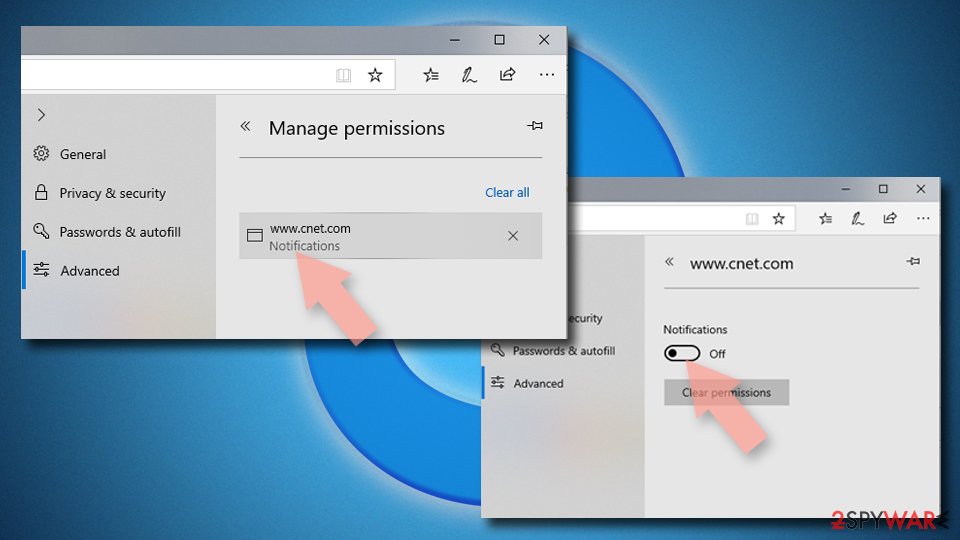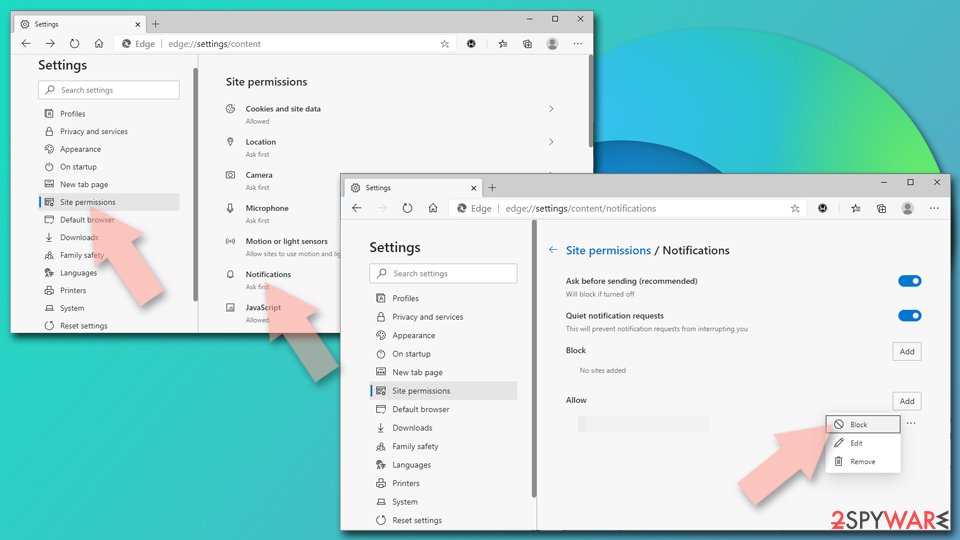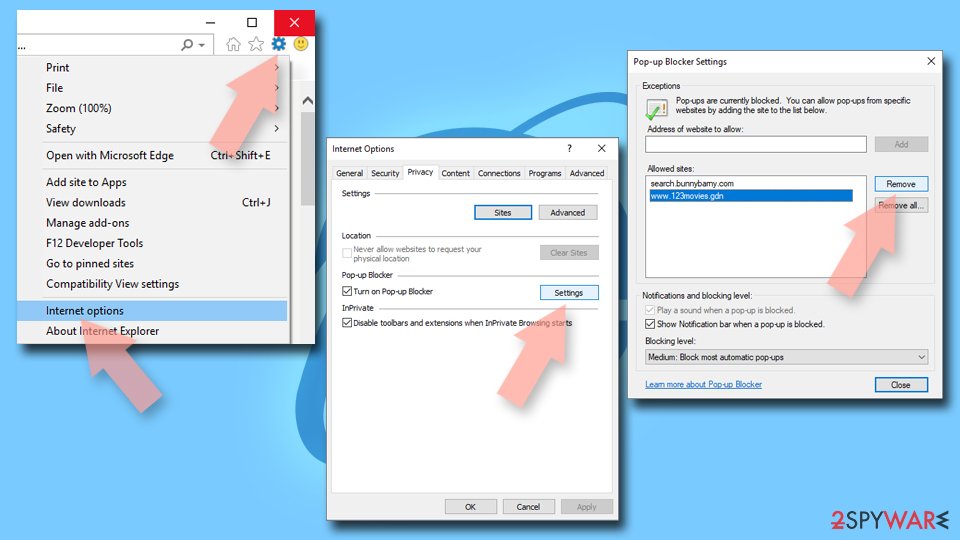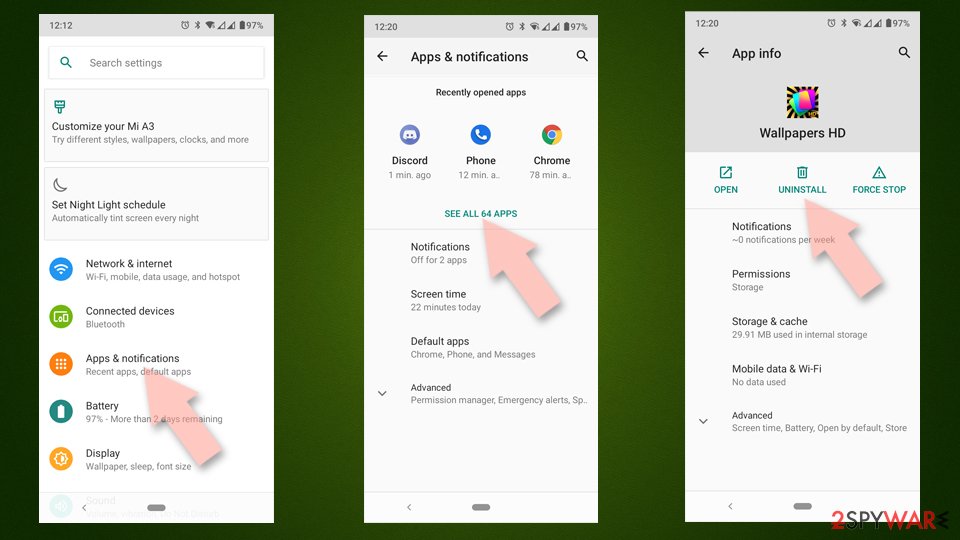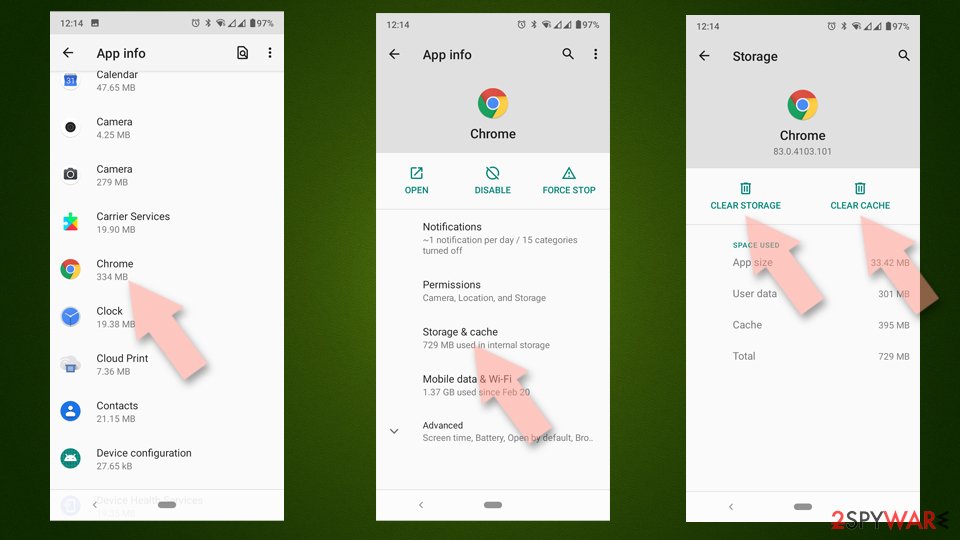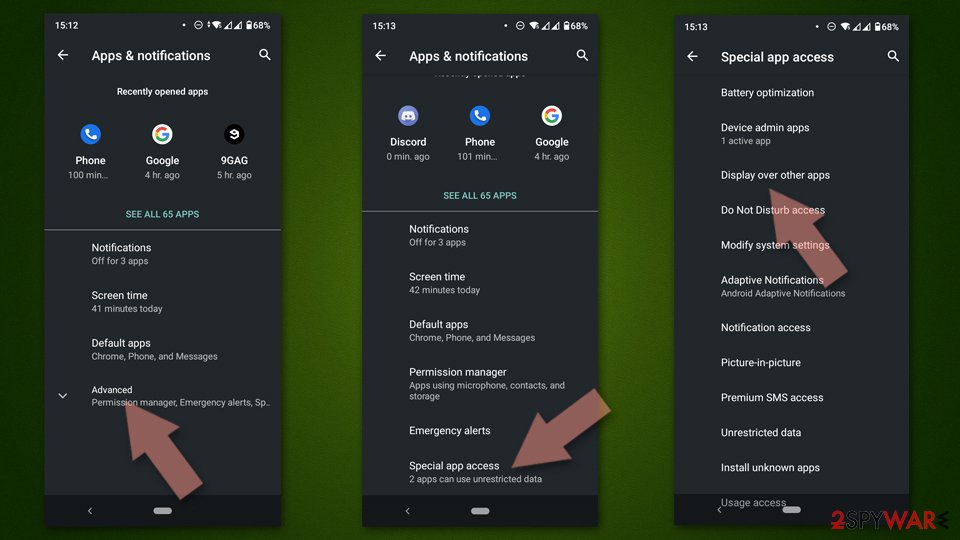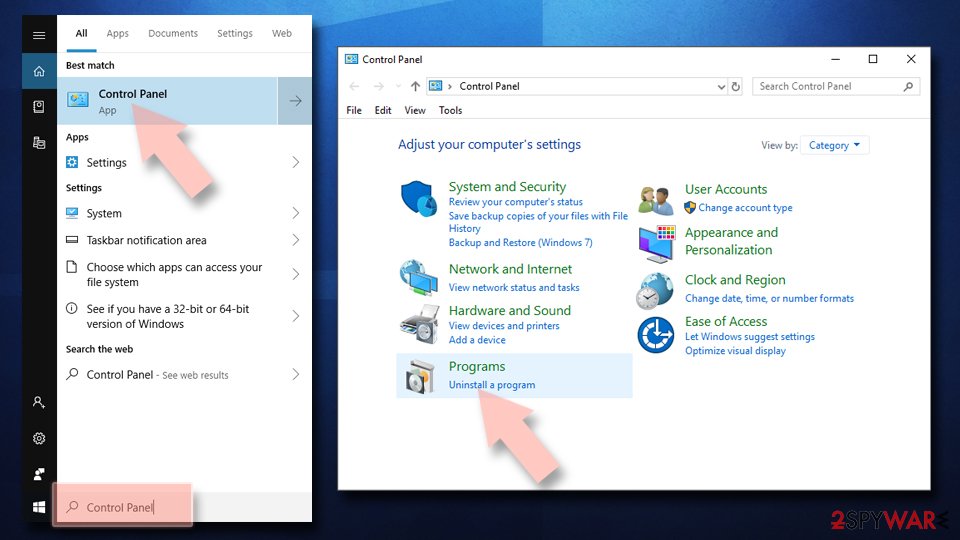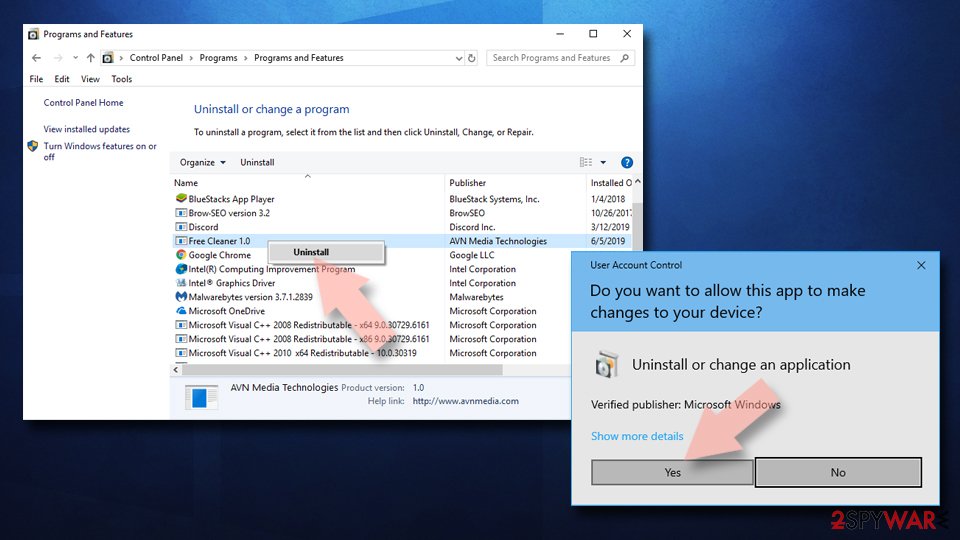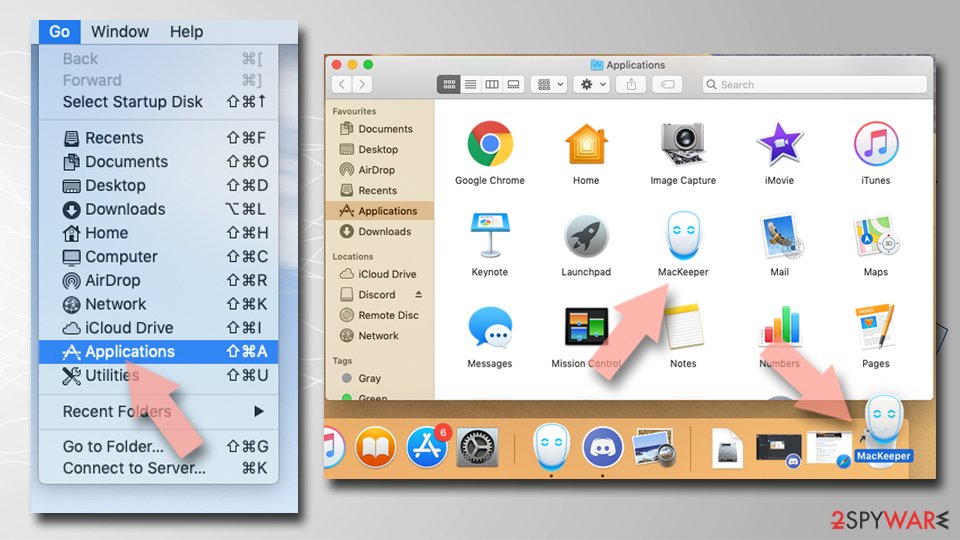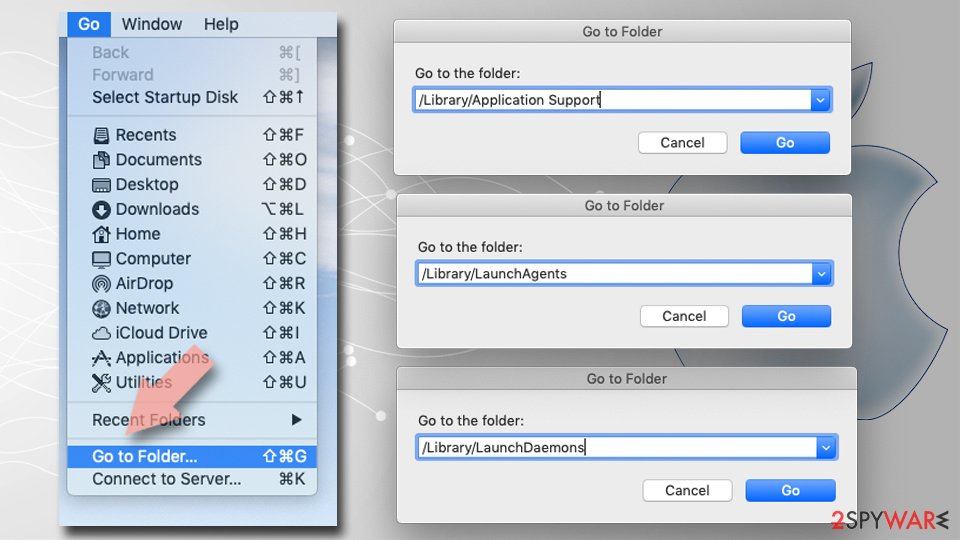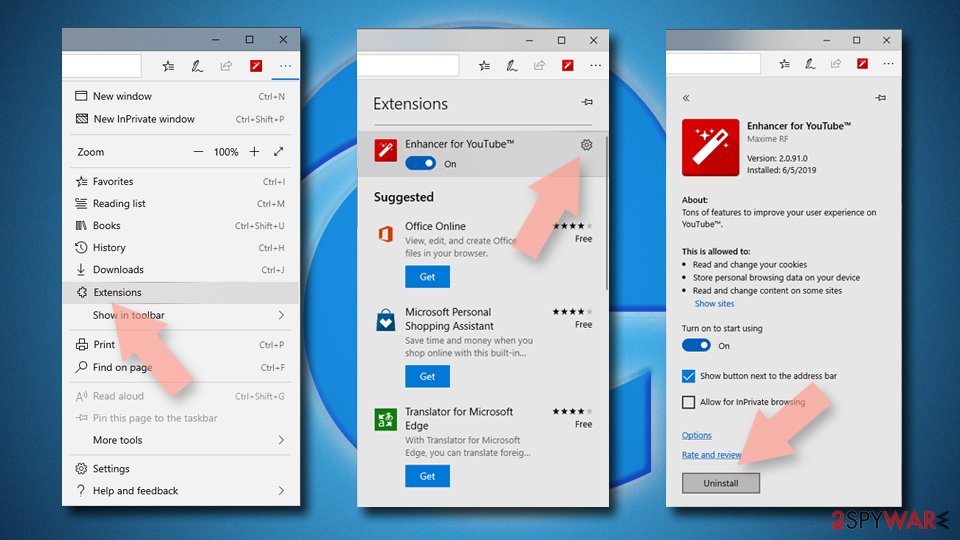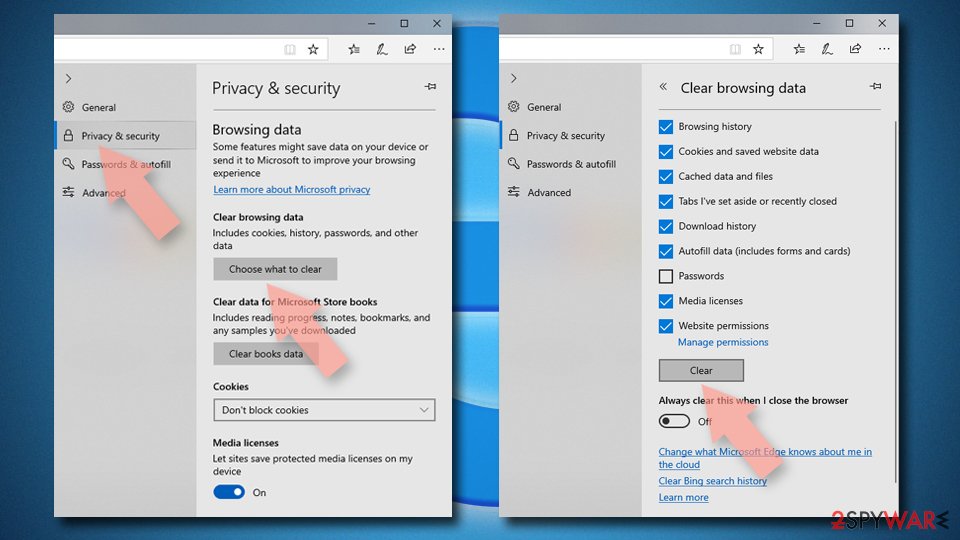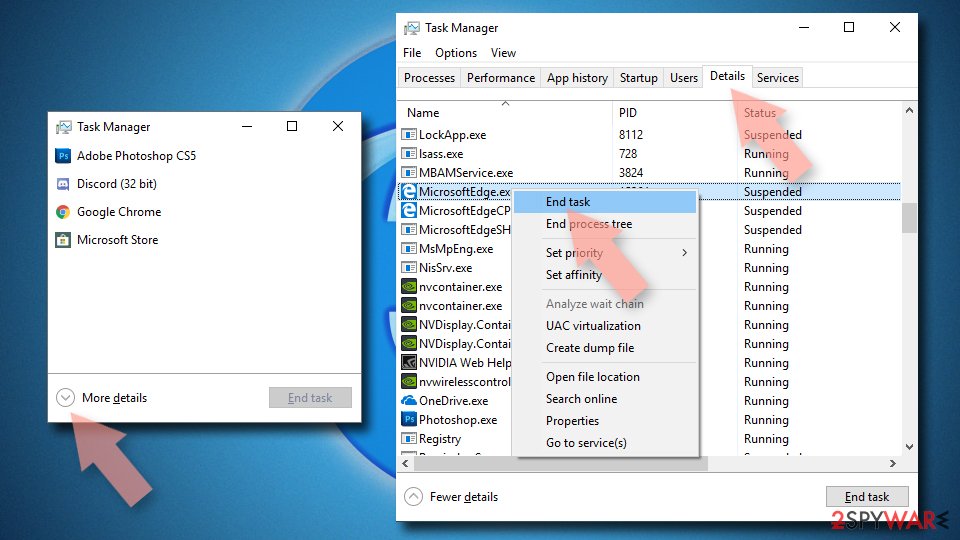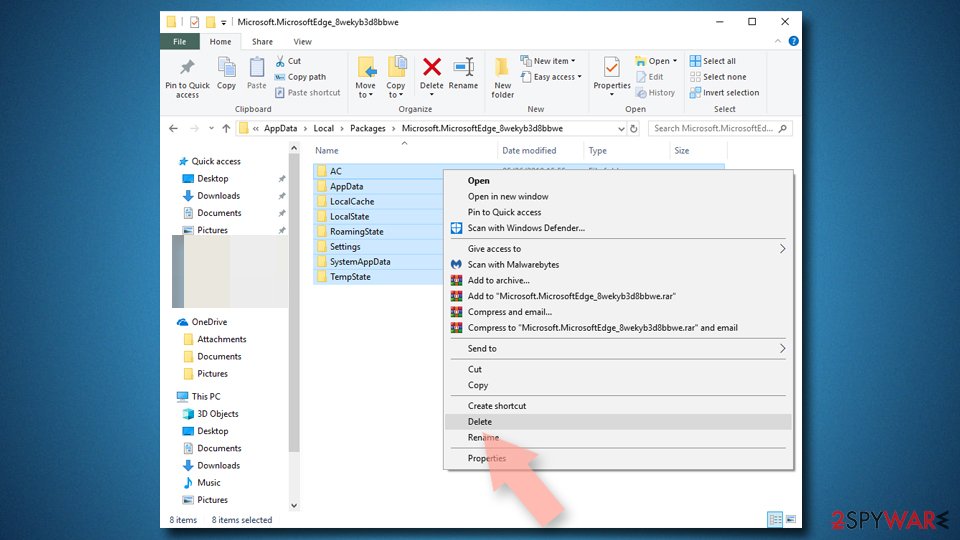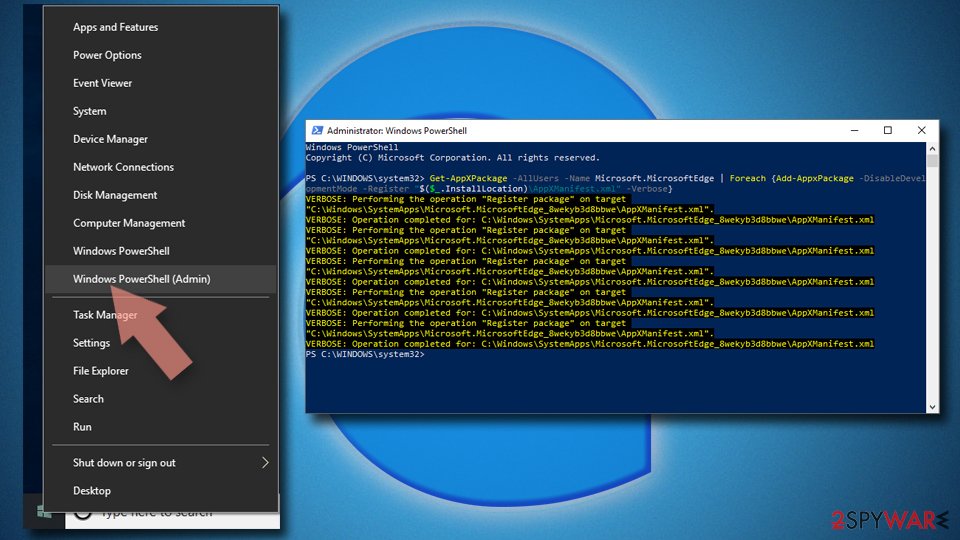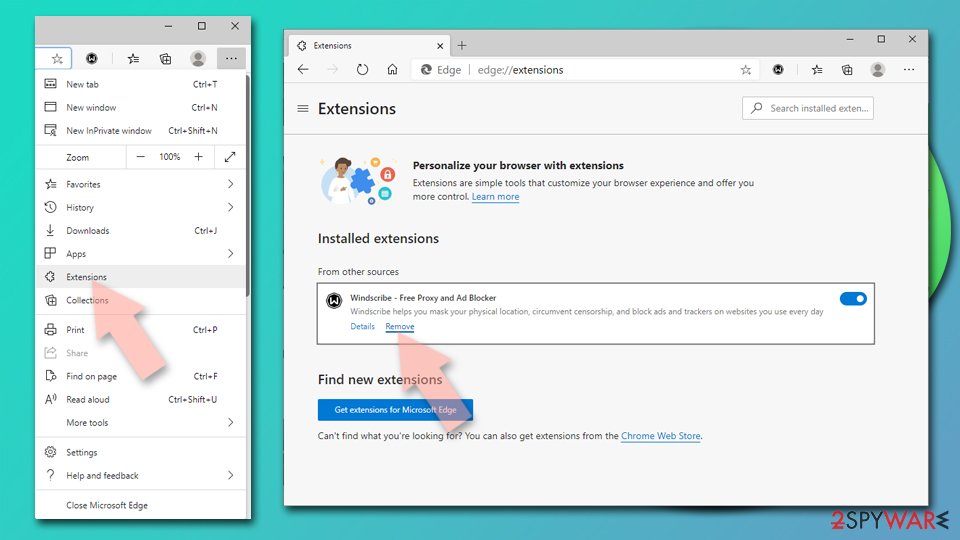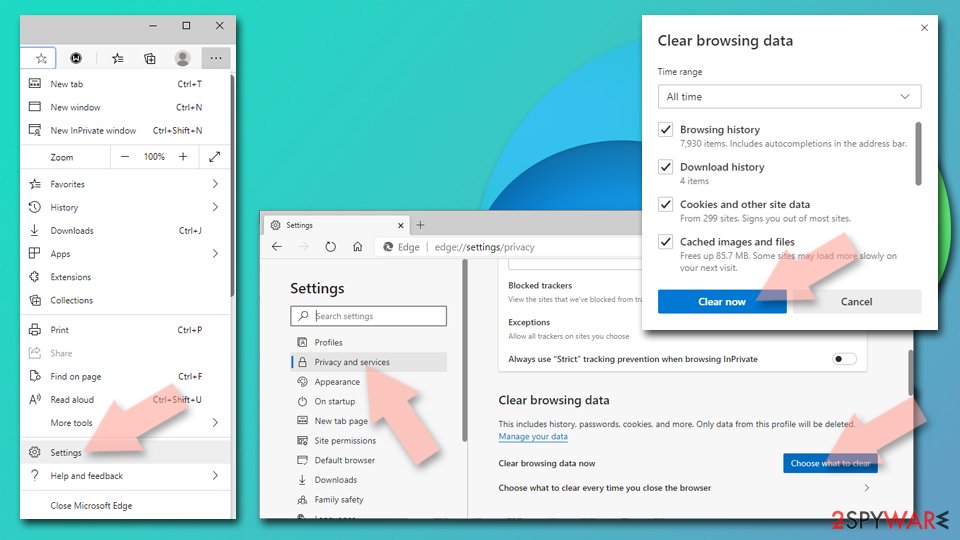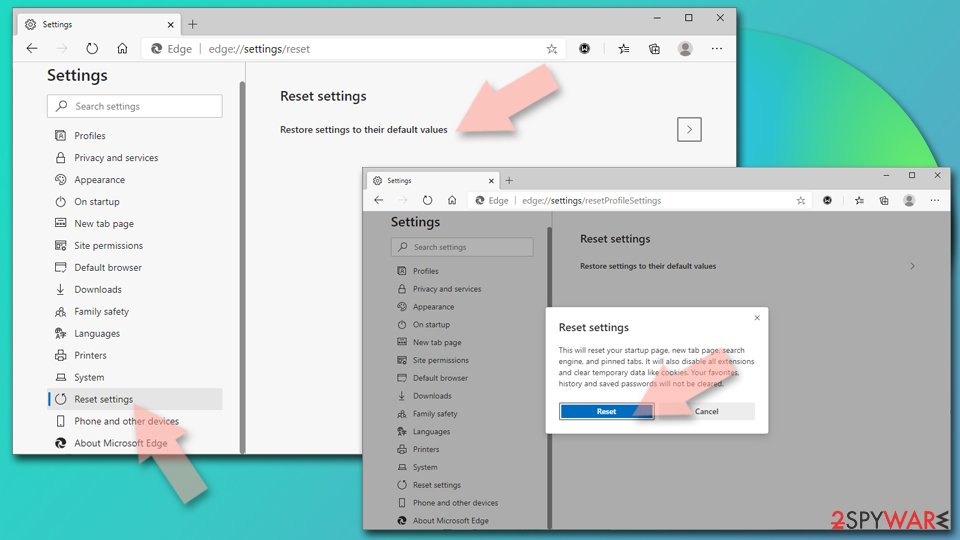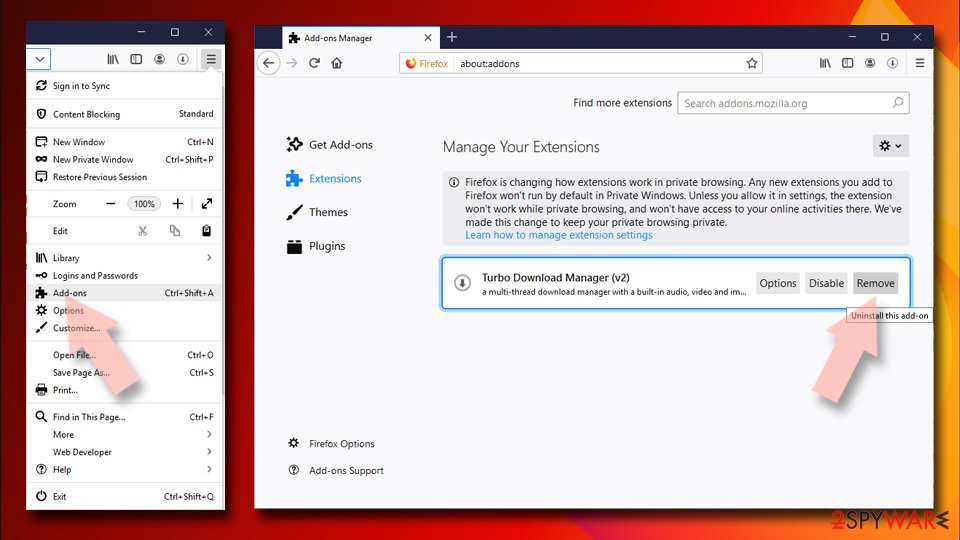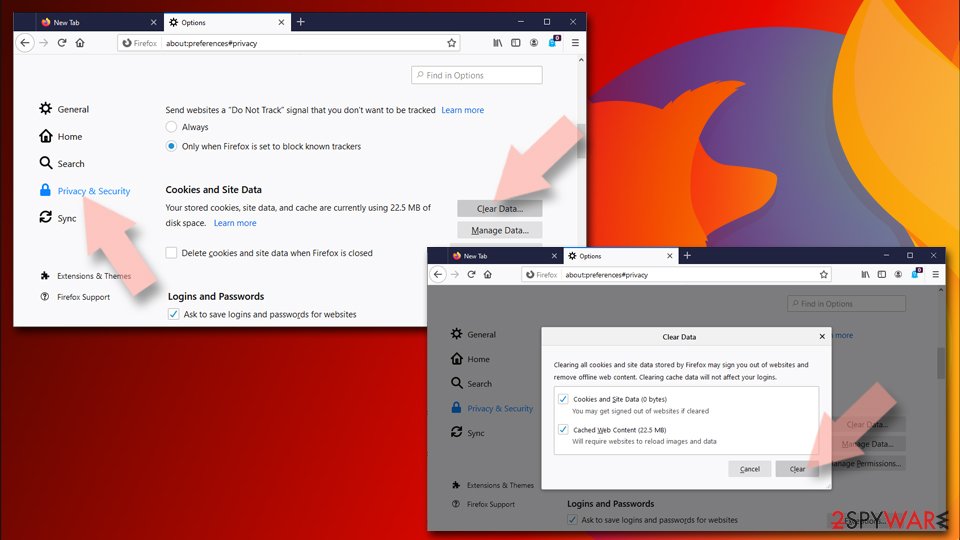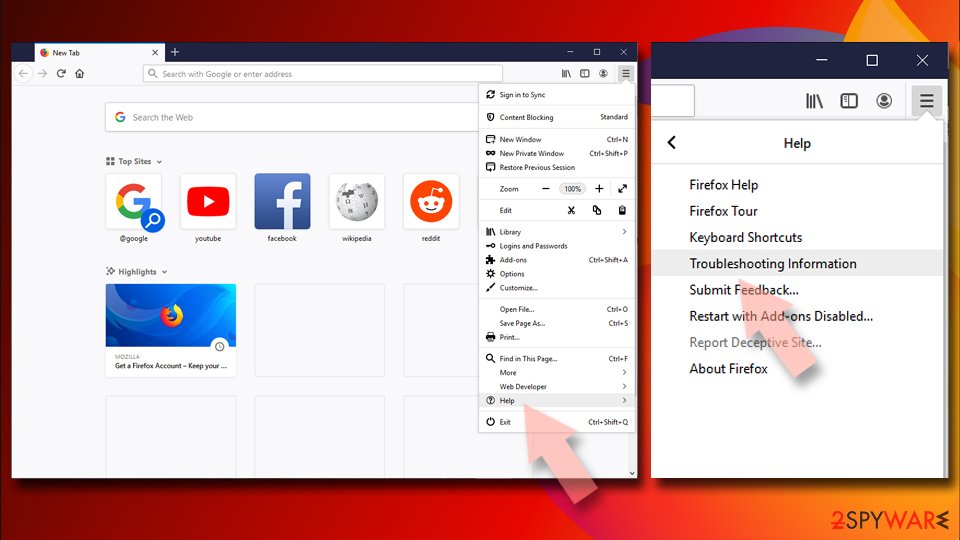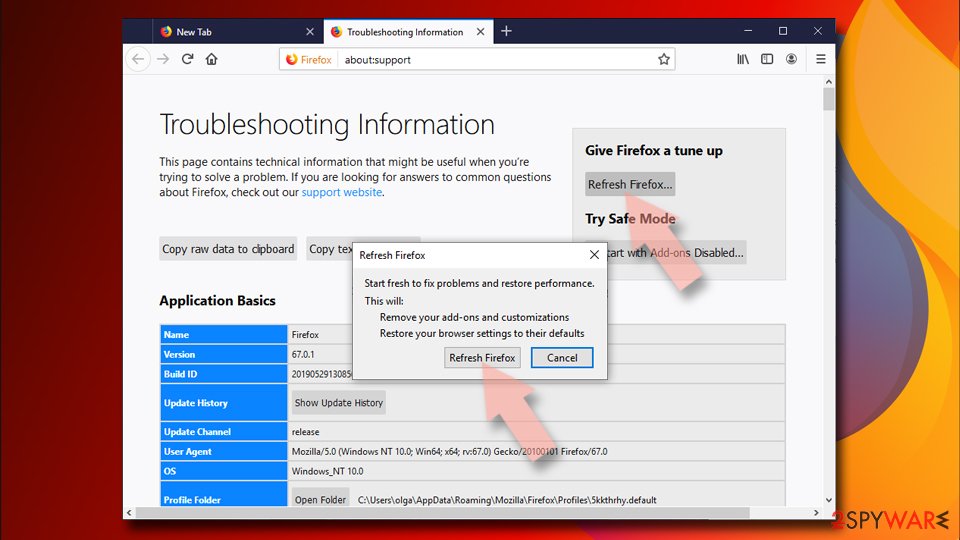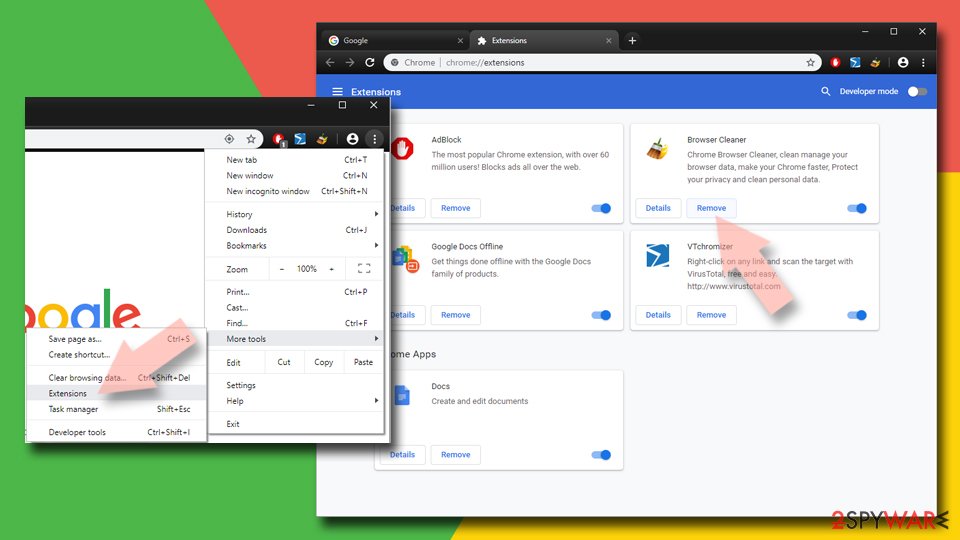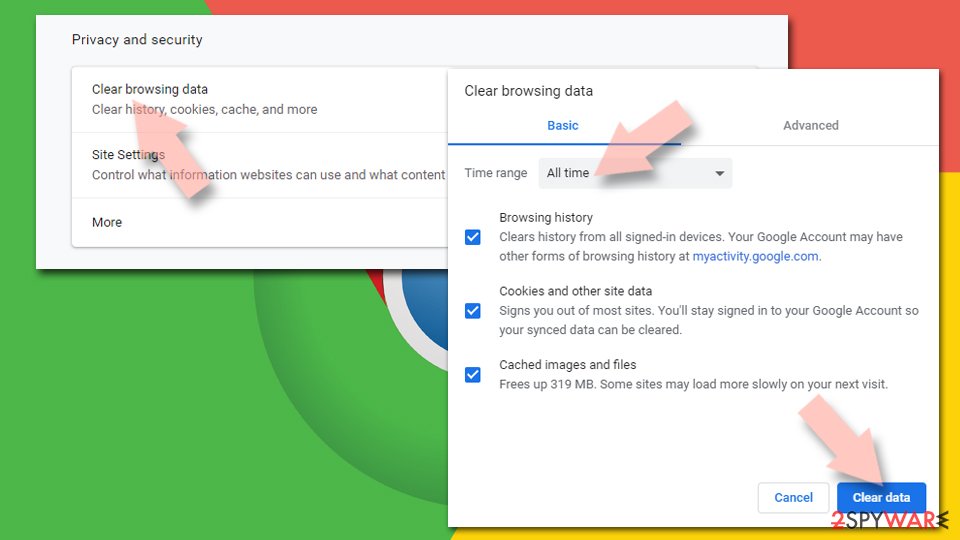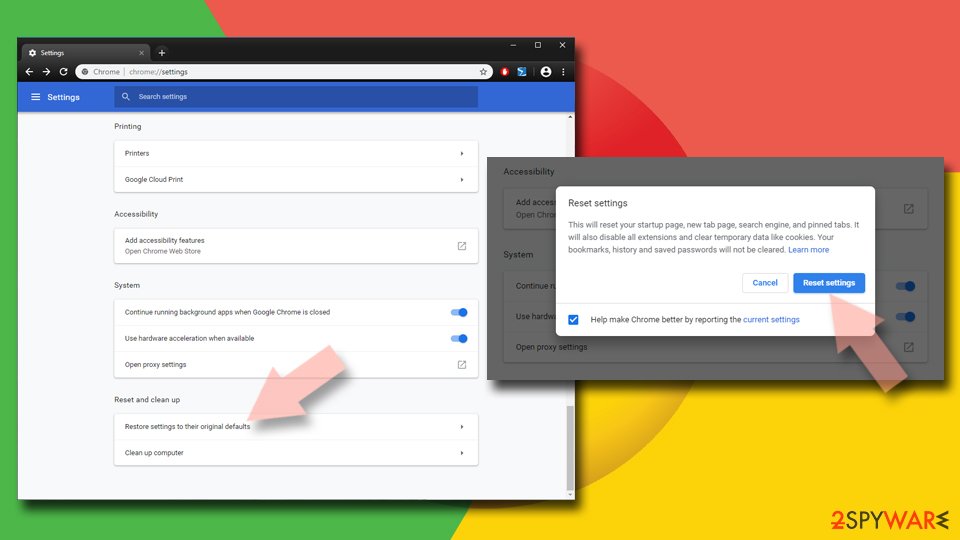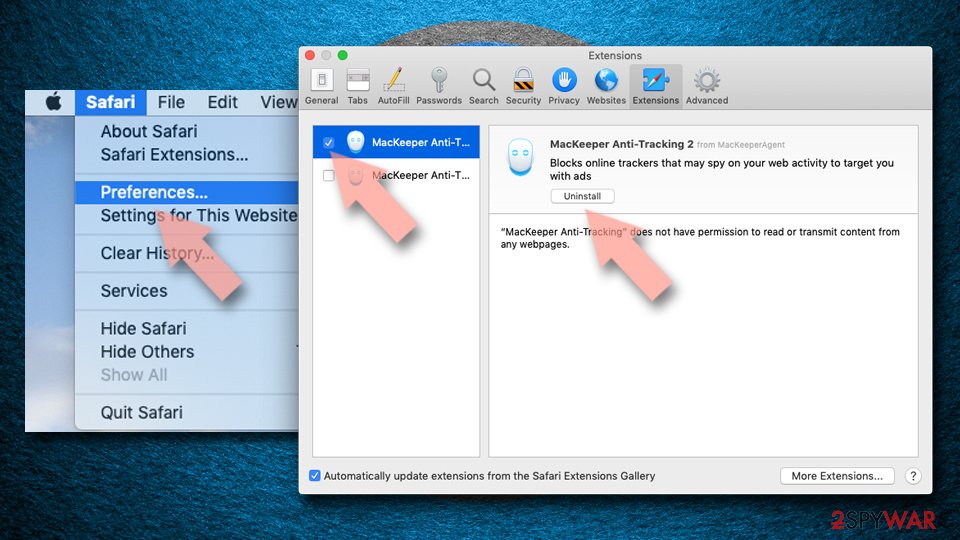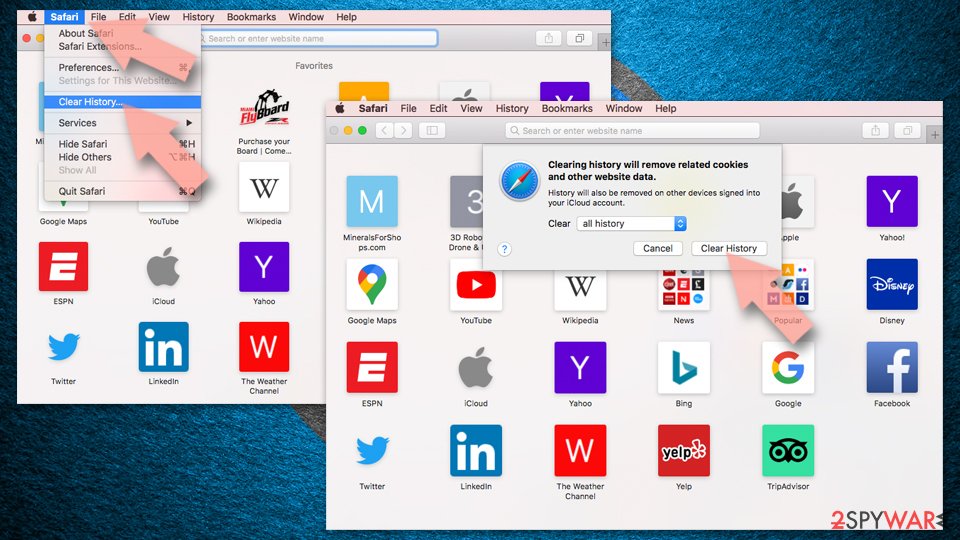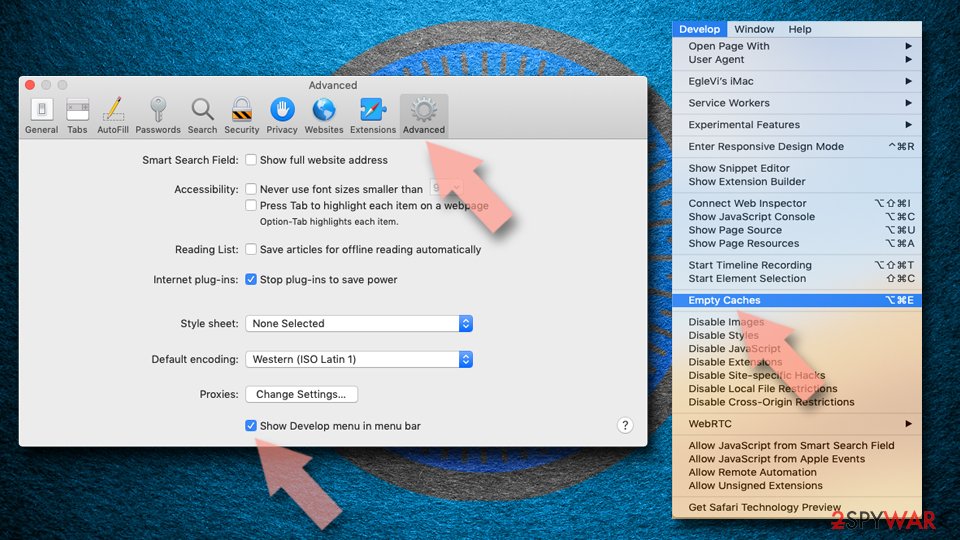Disciplinea.fun (Removal Instructions) - Chrome, Firefox, IE, Edge
Disciplinea.fun Removal Guide
What is Disciplinea.fun?
Disciplinea.fun – a dangerous website with ill intentions

Disciplinea.fun is a push notification virus website that seeks to display ads after tricking its visitors into pressing the Allow button. That would enable its notifications to pop up directly on your phone screen or computer desktop. Whether you visited this site willingly or were redirected to it, please don't press any buttons.
These types of shady pages get revenue from showing various misleading ads to people who subscribe to their notifications. Deceptive ads appear even when browsers are closed and could endanger users by rerouting them to hazardous websites.
Disciplinea.fun redirect might be caused by adware, browser hijacker, or other potentially unwanted programs (PUPs). Please don't be too anxious, as this junkware is nowhere near the severity of malware.[1] We'll explain how PUPs function, how they're spread, how to get rid of them, and how to restore your system's overall health.
| name | Disciplinea.fun |
|---|---|
| Type | Push notification virus, redirect, adware |
| IP address | 52.86.219.129 |
| Purpose | To show deceptive ads of affiliated websites through push notifications |
| Symptoms | Redirects, unwanted ads directly on the screen, slower internet connection, device lag |
| Risks | Redirects to shady websites might cause financial losses, security breaches, identity theft, malware infections |
| Distribution | Fake Flash Player updates, freeware, software bundles, deceptive ads |
| Removal | Get rid of any PUPs or malware by scanning your device with a trustworthy anti-malware software |
| System repair | Use the FortectIntego system optimizer to restore system health and evade abnormal system behavior, such as BSoDs, freezing, lag, etc. |
Disciplinea.fun ads could cause the most damage. For the most part, you will be redirected to hazardous websites that might try to steal sensitive information (SSNs, credit card details, etc.), force to install PUPs, download malware automatically through drive-by downloads,[2] involve you in various scams, and so on.
That's why these ads are called deceptive, as they have nothing in common with the websites that users are rerouted to. Furthermore, Disciplinea.fun virus could open these pages suddenly without you even pushing any buttons, any links. Thus forcing you to visit shady portals.
People rarely visit pages like Disciplinea.fun pop-up site on purpose. In most cases, you are being redirected to such dubious portals when your device is infected with adware. This PUP can work in various ways, but causing redirects and showing you tons of ads is their most likely purpose.
There's a lot of different adware, including Topfreenewsfeeds.com virus, Allowlucks virus, Alert-info.space virus, and a bunch of other potentially unwanted programs that could endanger your privacy and security. The only way to protect yourself and your devices from such threats are with reliable anti-malware tools.

Trustworthy and free security tools such as SpyHunter 5Combo Cleaner or Malwarebytes need to be updated at all times to prevent the latest cyber threats from infecting your machines. Such tools will also automatically remove Disciplinea.fun and any PUPs causing redirects to this and any other suspicious sites.
Cybersecurity experts[3] highly recommend using one more tool to restore your device's overall health. The all-in-one FortectIntego system repair software will finish Disciplinea.fun removal by eliminating its traces from system files and settings and delete any tracking cookies that hazardous sites might have stored on your device.
Fake Flash Player updates and deceptive ads are responsible for a lot of PUP installations
PUPs are infrequently installed voluntarily. Their developers use various stealthy distribution techniques, including software bundling, freeware, etc. One of the most popular PUP delivery methods is deceptive ads. They can be seen on shady websites and can use various social-engineering techniques to try and trick users into installing their promoted software.
Some might suggest that an app will greatly increase device performance, boost the internet connection, or might even claim that your computer or cell phone is infected with malware and that you need to download and install their app immediately to remove it.

Another widespread PUP (and even malware) distribution method is through fake Flash Player updates or installers. Users might encounter false Flash errors on the same shady websites. We advise our readers never to believe ads and various errors seen while browsing the internet, as no website is capable of determining whether you need a software update or if your device is infected with viruses.
Instructions to quickly remove Disciplinea.fun virus from any infected devices
Disciplinea.fun virus can affect any device, including Windows and Mac computers and Android smartphones. It can also infect browsers such as Chrome, Safari, Firefox, and others. The good news is that you can easily eliminate it with our free guides and restore your device back to normal.
To begin Disciplinea.fun removal, you will need to update your security tools virus database with the latest signatures. Then perform a full system scan and wait a couple of minutes until it's finished. Afterward, stick to the anti-malware tools recommendations on what to do next.
When you remove Disciplinea.fun from your device, you need to delete its notifications from the browsers. If you're not aware of how that's done, below this article, you'll find our free step-by-step guides. If you stick to them, your device will be virus-free within minutes. And lastly, perform system diagnostics to repair altered system settings and delete tracking cookies.
You may remove virus damage with a help of FortectIntego. SpyHunter 5Combo Cleaner and Malwarebytes are recommended to detect potentially unwanted programs and viruses with all their files and registry entries that are related to them.
Getting rid of Disciplinea.fun. Follow these steps
Stop browser notifications
Remove unwanted notifications from Google Chrome (desktop):
- Open Google Chrome browser and go to Menu > Settings.
- Scroll down and click on Advanced.
- Locate Privacy and security section and pick Site Settings > Notifications.

- Look at the Allow section and look for a suspicious URL.
- Click the three vertical dots next to it and pick Block. This should remove unwanted notifications from Google Chrome.

Remove unwanted notifications from Google Chrome (Android):
- Open Google Chrome and tap on Settings (three vertical dots).
- Select Notifications.
- Scroll down to the Sites section.
- Locate the unwanted URL and toggle the button to the left (Off setting).

Remove unwanted notifications from Mozilla Firefox:
- Open Mozilla Firefox and go to Menu > Options.
- Click on Privacy & Security section.
- Under Permissions, you should be able to see Notifications. Click the Settings button next to it.

- In the Settings – Notification Permissions window, click on the drop-down menu by the URL in question.
- Select Block and then click on Save Changes. This should remove unwanted notifications from Mozilla Firefox.

Remove unwanted notifications from Safari:
- Click on Safari > Preferences…
- Go to the Websites tab and, under General, select Notifications.
- Select the web address in question, click the drop-down menu and select Deny.

Remove unwanted notifications from MS Edge:
- Open Microsoft Edge, and click the Settings and more button (three horizontal dots) at the top-right of the window.
- Select Settings and then go to Advanced.
- Under Website permissions, pick Manage permissions and select the URL in question.

- Toggle the switch to the left to turn notifications off on Microsoft Edge.

Remove unwanted notifications from MS Edge (Chromium):
- Open Microsoft Edge, and go to Settings.
- Select Site permissions.
- Go to Notifications on the right.
- Under Allow, you will find the unwanted entry.
- Click on More actions and select Block.

Remove unwanted notifications from Internet Explorer:
- Open Internet Explorer, and click on the Gear icon at the top-right of the window.
- Select Internet options and go to the Privacy tab.
- In the Pop-up Blocker section, click on Settings.
- Locate web address in question under Allowed sites and pick Remove.

Uninstall from Android
Uninstall unwanted programs from Android device:
- Go to Settings -> Apps/Applications.
- Expand the full list of the installed apps.
- Scroll through the list and tap on a suspicious application once.
- Tap on it and select Uninstall.

- Reboot the device.
Clear Storage and data files on Android from Google Chrome or other apps:
- Go to Settings > Apps/Applications.
- Expand the full list of the installed apps.
- Tap on Chrome and select Storage & cache.
- Clear storage and clear cache of the app.

If you are seeing ads on top of other apps but are not sure what is causing it, perform the following steps:
- Go to Apps/Applications.
- Tap Advanced.
- Select Special App access.
- Tap on Display over other apps.

- Eliminate apps with these access rights enabled.
Uninstall from Windows
Instructions for Windows 10/8 machines:
- Enter Control Panel into Windows search box and hit Enter or click on the search result.
- Under Programs, select Uninstall a program.

- From the list, find the entry of the suspicious program.
- Right-click on the application and select Uninstall.
- If User Account Control shows up, click Yes.
- Wait till uninstallation process is complete and click OK.

If you are Windows 7/XP user, proceed with the following instructions:
- Click on Windows Start > Control Panel located on the right pane (if you are Windows XP user, click on Add/Remove Programs).
- In Control Panel, select Programs > Uninstall a program.

- Pick the unwanted application by clicking on it once.
- At the top, click Uninstall/Change.
- In the confirmation prompt, pick Yes.
- Click OK once the removal process is finished.
Delete from macOS
Remove items from Applications folder:
- From the menu bar, select Go > Applications.
- In the Applications folder, look for all related entries.
- Click on the app and drag it to Trash (or right-click and pick Move to Trash)

To fully remove an unwanted app, you need to access Application Support, LaunchAgents, and LaunchDaemons folders and delete relevant files:
- Select Go > Go to Folder.
- Enter /Library/Application Support and click Go or press Enter.
- In the Application Support folder, look for any dubious entries and then delete them.
- Now enter /Library/LaunchAgents and /Library/LaunchDaemons folders the same way and terminate all the related .plist files.

Remove from Microsoft Edge
Delete unwanted extensions from MS Edge:
- Select Menu (three horizontal dots at the top-right of the browser window) and pick Extensions.
- From the list, pick the extension and click on the Gear icon.
- Click on Uninstall at the bottom.

Clear cookies and other browser data:
- Click on the Menu (three horizontal dots at the top-right of the browser window) and select Privacy & security.
- Under Clear browsing data, pick Choose what to clear.
- Select everything (apart from passwords, although you might want to include Media licenses as well, if applicable) and click on Clear.

Restore new tab and homepage settings:
- Click the menu icon and choose Settings.
- Then find On startup section.
- Click Disable if you found any suspicious domain.
Reset MS Edge if the above steps did not work:
- Press on Ctrl + Shift + Esc to open Task Manager.
- Click on More details arrow at the bottom of the window.
- Select Details tab.
- Now scroll down and locate every entry with Microsoft Edge name in it. Right-click on each of them and select End Task to stop MS Edge from running.

If this solution failed to help you, you need to use an advanced Edge reset method. Note that you need to backup your data before proceeding.
- Find the following folder on your computer: C:\\Users\\%username%\\AppData\\Local\\Packages\\Microsoft.MicrosoftEdge_8wekyb3d8bbwe.
- Press Ctrl + A on your keyboard to select all folders.
- Right-click on them and pick Delete

- Now right-click on the Start button and pick Windows PowerShell (Admin).
- When the new window opens, copy and paste the following command, and then press Enter:
Get-AppXPackage -AllUsers -Name Microsoft.MicrosoftEdge | Foreach {Add-AppxPackage -DisableDevelopmentMode -Register “$($_.InstallLocation)\\AppXManifest.xml” -Verbose

Instructions for Chromium-based Edge
Delete extensions from MS Edge (Chromium):
- Open Edge and click select Settings > Extensions.
- Delete unwanted extensions by clicking Remove.

Clear cache and site data:
- Click on Menu and go to Settings.
- Select Privacy, search and services.
- Under Clear browsing data, pick Choose what to clear.
- Under Time range, pick All time.
- Select Clear now.

Reset Chromium-based MS Edge:
- Click on Menu and select Settings.
- On the left side, pick Reset settings.
- Select Restore settings to their default values.
- Confirm with Reset.

Remove from Mozilla Firefox (FF)
Remove dangerous extensions:
- Open Mozilla Firefox browser and click on the Menu (three horizontal lines at the top-right of the window).
- Select Add-ons.
- In here, select unwanted plugin and click Remove.

Reset the homepage:
- Click three horizontal lines at the top right corner to open the menu.
- Choose Options.
- Under Home options, enter your preferred site that will open every time you newly open the Mozilla Firefox.
Clear cookies and site data:
- Click Menu and pick Settings.
- Go to Privacy & Security section.
- Scroll down to locate Cookies and Site Data.
- Click on Clear Data…
- Select Cookies and Site Data, as well as Cached Web Content and press Clear.

Reset Mozilla Firefox
If clearing the browser as explained above did not help, reset Mozilla Firefox:
- Open Mozilla Firefox browser and click the Menu.
- Go to Help and then choose Troubleshooting Information.

- Under Give Firefox a tune up section, click on Refresh Firefox…
- Once the pop-up shows up, confirm the action by pressing on Refresh Firefox.

Remove from Google Chrome
Delete malicious extensions from Google Chrome:
- Open Google Chrome, click on the Menu (three vertical dots at the top-right corner) and select More tools > Extensions.
- In the newly opened window, you will see all the installed extensions. Uninstall all the suspicious plugins that might be related to the unwanted program by clicking Remove.

Clear cache and web data from Chrome:
- Click on Menu and pick Settings.
- Under Privacy and security, select Clear browsing data.
- Select Browsing history, Cookies and other site data, as well as Cached images and files.
- Click Clear data.

Change your homepage:
- Click menu and choose Settings.
- Look for a suspicious site in the On startup section.
- Click on Open a specific or set of pages and click on three dots to find the Remove option.
Reset Google Chrome:
If the previous methods did not help you, reset Google Chrome to eliminate all the unwanted components:
- Click on Menu and select Settings.
- In the Settings, scroll down and click Advanced.
- Scroll down and locate Reset and clean up section.
- Now click Restore settings to their original defaults.
- Confirm with Reset settings.

Delete from Safari
Remove unwanted extensions from Safari:
- Click Safari > Preferences…
- In the new window, pick Extensions.
- Select the unwanted extension and select Uninstall.

Clear cookies and other website data from Safari:
- Click Safari > Clear History…
- From the drop-down menu under Clear, pick all history.
- Confirm with Clear History.

Reset Safari if the above-mentioned steps did not help you:
- Click Safari > Preferences…
- Go to Advanced tab.
- Tick the Show Develop menu in menu bar.
- From the menu bar, click Develop, and then select Empty Caches.

After uninstalling this potentially unwanted program (PUP) and fixing each of your web browsers, we recommend you to scan your PC system with a reputable anti-spyware. This will help you to get rid of Disciplinea.fun registry traces and will also identify related parasites or possible malware infections on your computer. For that you can use our top-rated malware remover: FortectIntego, SpyHunter 5Combo Cleaner or Malwarebytes.
How to prevent from getting adware
Protect your privacy – employ a VPN
There are several ways how to make your online time more private – you can access an incognito tab. However, there is no secret that even in this mode, you are tracked for advertising purposes. There is a way to add an extra layer of protection and create a completely anonymous web browsing practice with the help of Private Internet Access VPN. This software reroutes traffic through different servers, thus leaving your IP address and geolocation in disguise. Besides, it is based on a strict no-log policy, meaning that no data will be recorded, leaked, and available for both first and third parties. The combination of a secure web browser and Private Internet Access VPN will let you browse the Internet without a feeling of being spied or targeted by criminals.
No backups? No problem. Use a data recovery tool
If you wonder how data loss can occur, you should not look any further for answers – human errors, malware attacks, hardware failures, power cuts, natural disasters, or even simple negligence. In some cases, lost files are extremely important, and many straight out panic when such an unfortunate course of events happen. Due to this, you should always ensure that you prepare proper data backups on a regular basis.
If you were caught by surprise and did not have any backups to restore your files from, not everything is lost. Data Recovery Pro is one of the leading file recovery solutions you can find on the market – it is likely to restore even lost emails or data located on an external device.
- ^ Roger A. Grimes. 9 types of malware and how to recognize them. Cso. Security news, features and analysis.
- ^ Drive-by download. Wikipedia. The free encyclopedia.
- ^ LosVirus. Losvirus. Spyware news and security.
